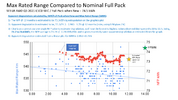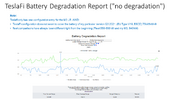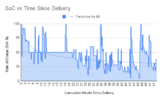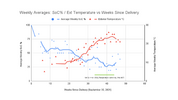AlanSubie4Life
Efficiency Obsessed Member
I was charging my car at the time, but that's kind of a dumb way to do it. It may well reduce the amps a bit in any case when you do it this way.Anyway I turned on the AC to LO, with windows open, and let it settle out (I think my fan speed was set quite high, though I didn't check). It went as low as 18mi/hr briefly, but once settled after about 1 minute was at 21mi/hr.
I connected my car to my WC with the doors open and HVAC still running and I saw 8A@240V, about 2 kW. I can't directly monitor power draw in my Tesla but I can in my PHEV and the compressor in that car consumes about 1.5-2.5 kW, once the cabin reaches the set temperature. If the cabin is far above the set temperature (like after the vehicle has been parked), the compressor will consume up to 4 kW.
Yes, this is a better way to do it. (Set charge limit below current limit and actuate AC from app with door closed but windows open.)
Since I remembered when I was with my car this weekend, I briefly set the AC set to "LO" (open loop), and I managed to get this up to 21A@237V apparently steady state (I only checked for a minute though, haha, no patience). And I didn't even play around with trying to alter the fan speed settings - though this was a fairly high fan speed.
That's 5kW, but you have to reduce it slightly by the AC-DC conversion loss (perhaps 5% - overall loss at 40A when charging is ~12% but a huge part of that doesn't apply here, because the battery isn't being charged), and the vehicle overhead of ~200W.
So that's 4.8kW*0.95 or about 4.5kW. Just very roughly. This is all on a Superbottle vehicle, no heat pump.
I'm curious about people's claims that the most efficient AC setting is to set to LO with fan speed 1 because it (allegedly) doesn't engage the heater. Probably could do similar experiments to figure it out.
Anyway, back to the OP issue - yes, it was very likely that AC was a huge contributor in this case, especially at 22mph at 100 degrees F. Lower speeds of course make it much worse.






